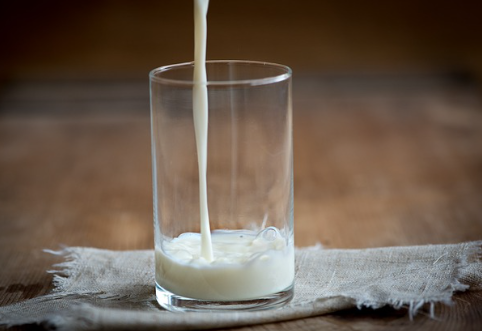Have you ever wondered how much protein is in a glass of milk? You’re not alone. Whether you’re hitting the gym, packing lunch for your kids, or just curious about what’s in your glass, this is a great question, and we’ve got the answer for you.
One glass of milk (8 ounces) contains 8 grams of protein, which equates to about 1 gram per ounce. It’s a simple and nutritious way for all ages to get a healthy dose of protein. Read on to learn why this is important and how milk can support your daily diet!
Is Milk A Good Source Of Protein?
Milk isn’t just a good source of protein it stands out for two big reasons: how much protein it offers per serving and the high quality of that protein.
While everyone’s daily protein needs vary based on age, activity level, and other factors, most adults need between 46 and 56 grams a day. With 8 grams of protein in every 8-ounce cup, milk can be a valuable part of reaching that goal.
What sets milk apart isn’t just the amount, but the quality of its protein. Milk contains high-quality proteins that include all nine essential amino acids those are the ones our bodies can’t produce on their own. One key amino acid is leucine, which plays a major role in building and repairing muscle. These essential amino acids are found more commonly in animal-based foods like dairy.
Leslie Bonci, a sports nutritionist and registered dietitian, emphasizes that while plant foods are incredibly important, they don’t always deliver the same protein punch as animal-based options. “With the exception of soy milk,” she says, “most plant-based milk alternatives are very low in protein and don’t offer the same quality.”
For instance, almond milk has only about 1.5 grams of protein per cup. You’d need to drink more than five cups of almond milk to match the protein in just one cup of cow’s milk and even then, you wouldn’t get the same balance of amino acids.
Ultimately, the best protein sources depend on your dietary needs and preferences. But unless you have a dairy allergy, milk can be a strong, reliable option even for those who are lactose intolerant. Bonci sums it up well: “If I mix dairy with plant-based foods, great! Because now I know I’m meeting my protein needs without going overboard on calories.”


How Much Protein Is In Whole Milk?
Milk comes in many different varieties whole, low-fat, lactose-free, and more and each has its own unique characteristics, such as fat levels and lactose content. But they all have one thing in common: they contain the same 13 essential nutrients, including high-quality protein. For example, whole milk contains 8 grams of high-quality protein per cup. Like other types of milk, it contains two types of complete protein, making it a nutritious choice, no matter which type of milk you choose.
What Are The Two High-Quality Proteins Found In Milk?
Milk naturally contains two types of high-quality protein: casein and whey. Both are considered complete proteins because they provide all nine essential amino acids your body needs. Although both are found in milk, casein and whey function differently in the body. Each has its own unique benefits, which makes milk a powerful nutritional choice.
How Milk Protein Supports Your Body?
Thanks to its rich protein content and the high quality of both casein and whey, milk plays a key role in muscle growth and recovery. But its benefits go beyond fitness. Milk protein also helps support steady energy levels and can help you feel full and satisfied, which can improve focus during the day and promote better sleep at night. All of this makes milk an essential part of a balanced diet for all ages. If it’s not part of your diet, it may be beneficial to add it.

